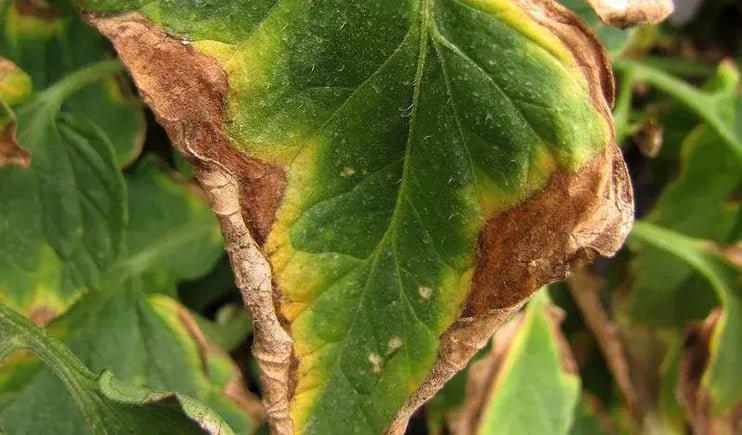Common tomato diseases and pests: how do you prevent them?

There are many tomato diseases and pests which you have deal with as a tomato grower and which you naturally want to avoid. Three common diseases are Clavibacter, ToBRFV and the tomato mosaic virus. In this blog, you can read more about the diseases and how to prevent them.
Clavibacter
Clavibacter – also called bacterial wilt disease – is caused by the bacterium Clavibacter michiganensis subsp. Michiganensis. These bacteria can be transferred to crops through seeds, young plants, fruit, water and tools and also remain in the ground and substrate. In the case of infected seeds, the disease becomes evident in the first six weeks after sowing and then often appears when the plant is heavy with fruit and the temperature in the greenhouse is high (in June and July). A plant infected with Clavibacter first exhibits shiny spots on leaves that discolour, then the edges and tips of leaves wilt, and finally the whole plant wilts. Clavibacter is so infectious that its has quarantine status. This means that growers must remove infected plants and have them destroyed.
ToBRFV
The Tomato brown rugose fruit virus (ToBRFV) is a relatively new virus in the world of tomatoes. An outbreak can render the harvest completely unsaleable and thus cause enormous economic damage. ToBRFV causes brown or yellow spots on tomatoes. The fruit can be misshapen or may not ripen properly. The virus presents itself in periods of heat or drought, but has often already been latently present in the plant. ToBRFV is a mechanically transmittable virus. This means that transmission takes place during crop treatments such as thinning, turning and harvesting. In addition, the virus also spreads by means such as tools, clothing and crates. Insects can also spread the virus. ToBRFV can survive in water, soil, residual vegetal material and seeds.
Tomato mosaic virus
Tomato plants can become infected with various strains of the mosaic virus, such as the pepino mosaic virus. Characteristic symptoms of plants infected with this virus are light and dark-green spots on the leaves and weak growth of the plant. Curled leaves and striped stalks can also occur. The fruits can also show symptoms of disease, such as uneven ripening or internal browning of the pericarp. The virus is transmitted by the plant, seeds, tools, people and to a lesser degree by insects.
Preventing diseases
For tomato growers, the advice is to always start with a clean crop and keep the business clean. Strict hygiene is required. Important points for attention in the hygiene protocol are:
- Ensure good personal hygiene. Wash and disinfect hands and shoes when entering the greenhouse and preferably do not wear any ‘outdoor clothing’ in the greenhouse. A hygiene lock and changing room guarantee good personal hygiene. The sanitary areas must also be clean.
- Ensure clean means of transport and packaging. The use of a crate and pallets washer guarantees bacteria-free crates and pallets. The wheels of forklift trucks that enter the greenhouse must also be disinfected.
- Clean and disinfect tools such as cutters and blades to prevent the plants from becoming infected. Special tool cleaners are available for this purpose.
- Regularly check the quality of the water used in the greenhouses because bacteria can also enter the greenhouse via the water.
- Enter the greenhouse only through the hygiene lock. Ensure therefore that other doors that provide access to the greenhouse can only be opened from the inside (emergency exits) or are locked.
Hygiene toolkit
The best protection for your crop is good hygiene. Elpress is pleased to offer you tools to get hygiene standards in your business right and keep them that way. So download our handy toolkit with a clear hygiene protocol and tips for good hand hygiene today.
.webp)





.jpg?width=600&height=300&name=83203100%20-%20DZD-1000-R%20(3.1).jpg)
